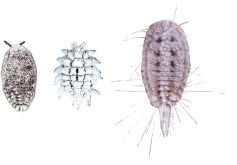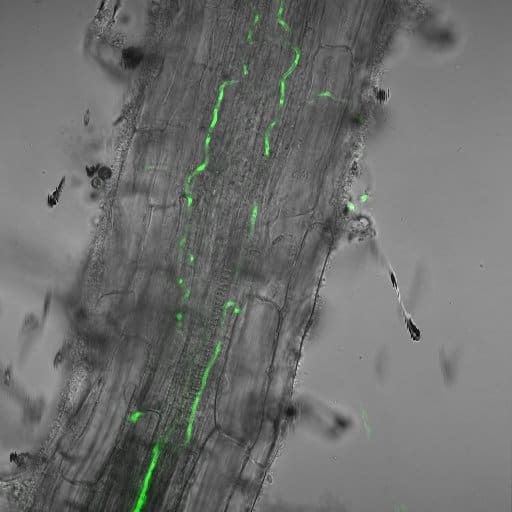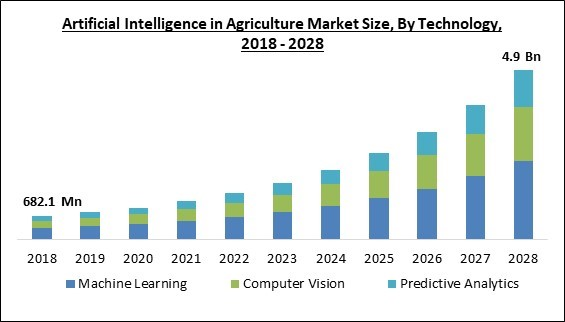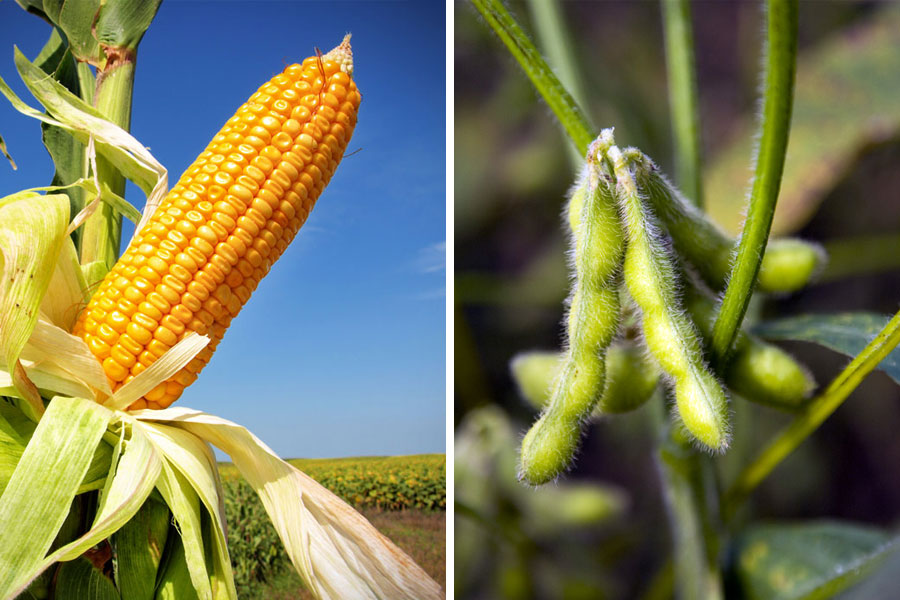
New ID Test for Invasive Mealybug Pest
[ad_1]
ENTOMOLOGY TODAY LEAVE A COMMENT
The hibiscus mealybug (Nipaecoccus viridis), also known as the lebbeck mealybug, infests a variety of different host plants in Florida. (Photos by Erin Powell, Ph.D., Lance Osborne, Ph.D., and Muhammad Z. Ahmed, Ph.D.)
By Muhammad Z. Ahmed, Ph.D.
Muhammad Z. Ahmed, Ph.D.
A variety of small, soft-bodied scale insects are called “mealybugs” due to the white, powdery, meal-like wax covering their bodies. They can be found on all plant parts, including roots, and they reproduce with and without mating, resulting in multiple overlapping generations in a single season. They cause damage directly by sucking sap from plant phloem, which reduces plant vigor and causes chlorosis and defoliation, and indirectly by excreting honeydew, which leads to the development of black sooty mold that reduces aesthetic value and blocks plant photosynthesis. Mealybugs can also transmit plant viruses and toxins.
Difficulties in mealybug identification remain an obstacle to their adequate management. Slide-mounting is mandatory for species-level identification. However, it can only be done in laboratory settings, requires several technical and tedious steps, can take up to two hours, and is mainly done with adult females, on which most of the taxonomic literature on mealybugs is based.
However, in the case of one important mealybug species, a new and improved alternative for identification is now available. The hibiscus mealybug (Nipaecoccus viridis), also known as the “lebbeck mealybug,” is a multi-crop pest that has emerged in recent years in Florida. In our recent study published in the Journal of Applied Entomology, fellow researchers and I describe an alternative to slide-mounting to identify N. viridis, using a safe chemical solution that causes hemolymph to turn green in N. viridis—and only N. viridis—providing species-specific field identification of all life stages of this pest.

A Mess of Mealybugs
Florida has nearly 400 scale insect species, making it the state with the second-highest diversity of scales in the country after California, with 540 species. Scale insects have three major groups: armored scales, mealybugs, and soft scales. About 2,000 mealybug species are known globally, with 320 species in the United States and 70 to 80 species known in Florida. Of those, 65 species (82 percent) are non-native to the state, about half originating from other states and half from abroad.
| Mealybug Species Introduced in Florida Since 1998 |
|
| Species | Year Discovered |
| Paracoccus marginatus | 1998 |
| Chaetococcus bambusae | 1999 |
| Palmicultor palmarum | 2000 |
| Palmicultor lumpurensis | 2002 |
| Maconellicoccus hirsutus | 2002 |
| Heterococcus raui | 2010 |
| Nipaecoccus viridis | 2010 |
| Planococcus minor | 2010 |
| Stemmatomerinx adenticulata | 2010 |
| Dysmicoccus mcdanieli | 2010 |
| Phenacoccus multicerarii | 2011 |
| Paracoccus gillianae | 2012 |
| Phenacoccus sisymbriifolium | 2019 |
Nipaecoccus viridis is one of the 13 species of mealybugs that have invaded Florida in just the last 25 years (see table at right). The infestations of N. viridis were recorded in small pockets in south Florida after its first report until 2019, when a heavy infestation was found associated with commercial citrus for the first time. Afterward, it has been found to cause damage to various other commercial crops, including blueberries and hemp. Heavy infestations in ornamental plants, including oleander and jatropha, were also observed last year in south Florida.
Colleagues and I have since been looking for an alternative for slide-mounting to identify N. viridis in the field. We considered a field guide to show the morphological comparison of adult females, but this would still require technical training, a binocular microscope, and adult females without wax, and it would not work if the adult female was covered with wax or if there were mixed-species infestations. In addition, morphological identification may not be reliable if new mealybug species sharing similar habitats and host plants invade Florida in the future.
Another alternative of slide-mounting for field identification was a color test in 75 percent ethanol. We observed that all N. viridis samples stained 75 percent ethanol red; their body color turned black and released purplish hemolymph when crushed. This method was very user-friendly and effective in the field. However, while going through the liquid collection of the Florida State Collection of Arthropods, we found several other mealybug and similar-looking scale insects that can also stain ethanol red, turn their bodies black, and release purple hemolymph when crushed.
A color test of adult female Nipaecoccus viridis and its hemolymph in 75 percent ethanol (EtOH) results in red ethanol and dark purple hemolymph; however, several other mealybug species in Florida elicit the same result. (Image originally published in Ahmed and Deeter, 2022, Journal of Applied Entomology)
A new possibility arose while digging into the complex taxonomic history of N. viridis. It was first described in India as Dactylopius viridis Newstead, then transferred to the genus Pseudococcus and then to Nipaecoccus, and it is now a senior synonym of seven different species. While looking at its original description, we noticed that the author mentioned that N. viridis, “when treated with potash … is of a beautiful emerald green.” Treating with potash (10 percent potassium hydroxide, or KOH) is one of the steps during the slide-mounting of mealybugs. We too had observed N. viridis turning green when we treated it with 10 percent KOH but had not thought of it as a species-level quality for N. viridis because it had not been compared with other mealybug species. So, we decided to start taking data on the color of all mealybugs while treating them with 10 percent KOH during slide-mounting.
A Dynamic Unique to Nipaecoccus viridis
I was working as a mealybug identifier with the Florida Division of Plant Industry and used to get mealybug samples from all over Florida for identifications. Over two consecutive years, we tested 2,635 specimens of 57 mealybug species from 26 genera collected from all over Florida, and we concluded that the green coloration of N. viridis in 10 percent KOH was unique among these species. Thus, it could be a reliable alternative to slide-mounting for N. viridis identification.
In a color test of adult female Nipaecoccus viridis in 10 percent potassium hydroxide (KOH), its hemolymph turns green. (Image originally published in Ahmed and Deeter, 2022, Journal of Applied Entomology)
Afterward, the question was, can this alternative to slide-mounting be applied to eggs and immature life stages of N. viridis? Most of the time, eggs and immature stages show up early in infestations, especially in nurseries.
In addition, adult males can be trapped with yellow sticky cards and male pheromones and thus are often used to detect and monitor the populations of mealybugs. So, the second question was, can this alternative be applied to adult males of N. viridis in the field?
We investigated, and indeed all life stages of N. viridis—including eggs, first instars, and adult males—turned green in 10 percent KOH in our tests, but those of other mealybugs did not. This helped us confirm that this alternative is not only species-specific but can also be applied to all life stages of this species and could be used as an alternative to slide-mounting of N. viridis. My colleague Lily Deeter and I published these findings in 2022 .
In a color test of eggs, immatures, and adult males of Nipaecoccus viridis in 10 percent potassium hydroxide (KOH), their hemolymph also turns green. (Image originally published in Ahmed and Deeter, 2022, Journal of Applied Entomology)
A Green Light for Growers
At that point, a third question was, is using KOH in the field safe? In the feedback from growers on the field diagnostic kit, we found potential safety hazards could be associated with KOH. Potassium can cause damage to the skin, eyes, and mucous membranes. This was one of the main limitations in developing a species-level field diagnostic kit. It is critical to ensure that any diagnostic tool developed in the field is safe for growers, scouts, and other individuals who may come into contact with it.
An unanswered question in the previous study was whether the potassium in the 10 percent KOH solution or its acidity (pH) turns the hemolymph of N. viridis green. If hemolymph turning green was not associated with potassium but rather with pH, then finding a safer alternative to KOH that can change the pH could resolve the situation. Therefore, we tested different solutions, along with KOH, covering the whole pH spectrum, to figure this out.
Our findings in this new study, published in August in the Journal of Applied Entomology, indicate that the alkaline pH between 11 and 14, not the potassium, turns N. viridis hemolymph green. A 5 percent sodium hydroxide (NaOH) solution (pH 14) successfully turned N. viridis green, identical to specimens tested with 10 percent KOH.
Using NaOH over KOH offers several potential benefits. NaOH is less corrosive and more water soluble than KOH. In addition, NaOH is a less strong base and is typically less expensive compared to KOH. Our study suggests that 5 percent NaOH, half the concentration of 10 percent KOH used, is enough to turn N. viridis hemolymph green. In addition, NaOH products such as Pure Lye (used in our study) is commonly used in household cleaning and is publicly acceptable as safe to use with caution. We infer that 5 percent NaOH (pH 14) makes our field diagnostic kit more user-friendly and acceptable to growers.
A color test of Nipaecoccus viridis and Paracoccus marginatus in chemical solutions with different acid/base (pH) levels revealed that a high pH of 14, not potassium specifically, is the driver in turning N. viridis hemolymph green—enabling the development of a field diagnostic test using a safer chemical solution, sodium hydroxide (NaOH) with a similar pH. (Image originally published in Ahmed et al 2023, Journal of Applied Entomology)
How Easier ID Can Slow This Mealybug
Nipaecoccus viridis is currently limited to Florida and may eventually spread to other states. It has recently been reported to be intercepted in two other states, Maryland and North Carolina, and was also reported in a residential area in Texas on citrus. Its spread to other states could have serious consequences for citrus and ornamental plant industries. The prevention of N. viridis‘ spread to more hosts and locations will depend on its early field detection, and t his field diagnostic kit will greatly aid such efforts.
Additionally, where N. viridis has become established, the kit will enable growers to identify N. viridis quickly and accurately and take appropriate measures to control its populations, reducing its impact on citrus and ornamental plants.
Nipaecoccus viridis has been intercepted several times in California, and the California Department of Food and Agriculture (CDFA) recently rated N. viridis a pest highly likely to establish a widespread distribution there. My co-author Natalia von Ellenrieder, Ph.D., a mealybug identifier at CDFA, says the field diagnostic kit will be essential in facilitating early detection and rapid response in California.
“This proactive approach can help minimize the impact of the pest on California’s agricultural industry and ecosystems,” she says.
Likewise in Georgia, a neighboring state to Florida, where N. viridis could arrive soon, says co-author Erich N. Schoeller, Ph.D., assistant professor, University of Georgia.
Mealybugs tend to develop resistance to insecticides. Studies have shown that citrus mealybug (Planococcus citri), often found together with N. viridis in the field, has developed resistance due to overuse of insecticides. Mealybugs also show behavioral resistance to insecticides due to the waxy layers that cover the bodies of older life stages and prevent insecticides from contracting the cuticle.
“The crawler stage of mealybugs is the most susceptible to insecticidal management, because the crawlers do not have a waxy covering,” says co-author Lauren Diepenbrock, Ph.D., assistant professor at the University of Florida (UF). “Additionally, this is the most abundant life stage in an actively growing population.”
However, the crawler stage is only active for a few days. Identifying mealybug species at the crawler stage is critical to applying contact insecticides at the optimal time. But, when scientists find young mealybugs among crops, they are most often guessing its species, says co-author and UF professor Lance Osborne, Ph.D. “Identification at the early stage for N. viridis is critical to our growers,” he says.
In addition, most mealybug species, including N. viridis, have effective biological control agents. “Rapid identification of N. viridis in the field will aid the search for candidate classical biological control agents of N. viridis,” says co-author and UF assistant professor Nicole Quinn, Ph.D.
Read More
Journal of Applied Entomology
Muhammad Z. Ahmed, Ph.D., is a research entomologist in the Subtropical Insects and Horticulture Research Unit at the U.S. Department of Agriculture’s Agricultural Research Service in Fort Pierce, Florida. Email: muhammad.ahmed@usda.gov.
SHARE THIS:
[ad_2]
























